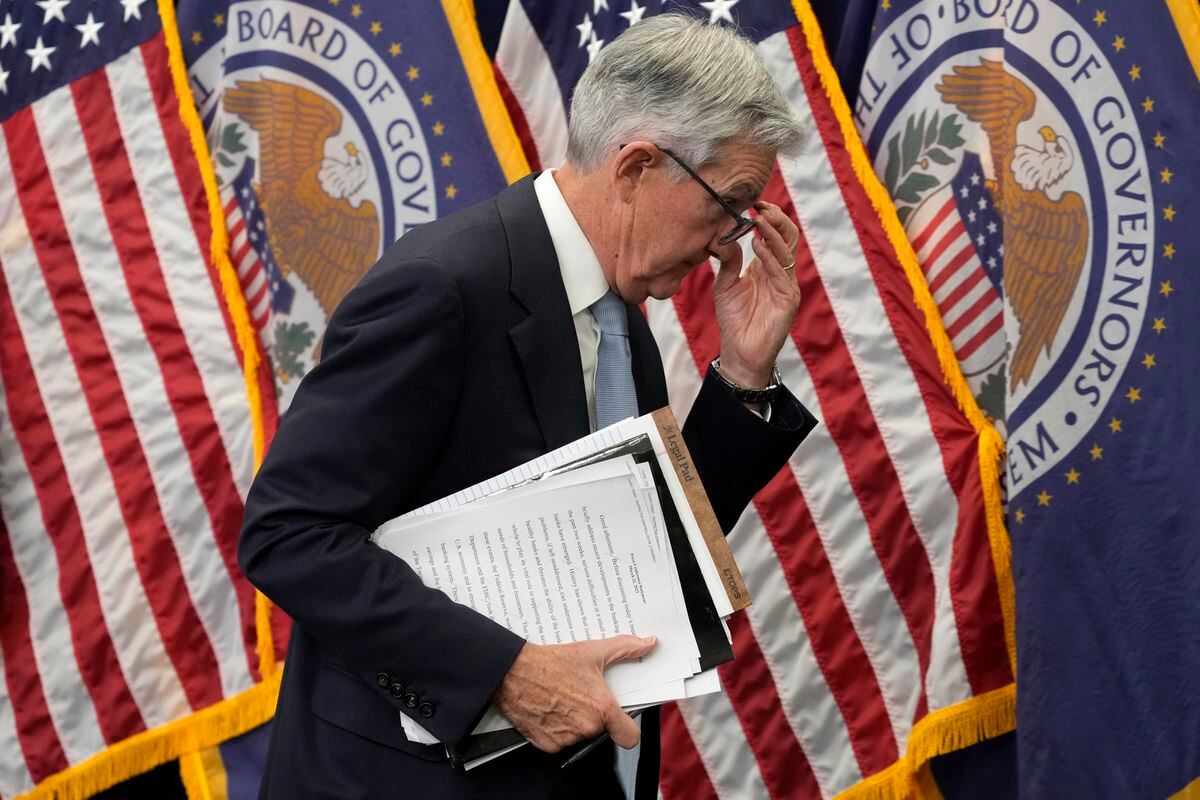Federal Reserve Chairman Jerome Powell sticks to his script.
Fighting inflation has been his top priority for more than a year.
Financial stability and the level of employment matter, but price stability has become his obsession.
In that battle, Powell has fired this Wednesday for the tenth time in a row.
That's a 0.25 point rise, to the 5-5.25% range, the highest level since 2007. In just over a year, the Federal Reserve has raised interest rates five points.
However, the statement from the Federal Reserve opens the door for this to be the last rise in the cycle or, at least, for there to be a pause in the tightening of monetary policy.
The central bank has met the expectations of analysts and investors.
There was almost unanimity that this would be the movement of this meeting, which comes days after the intervention and sale of the First Republic Bank and when the storm is still hitting some regional banks.
And there was also a consensus that the Federal Reserve would leave the door open to pause rate hikes at the next meeting.
According to the statement, and while waiting for Powell's press conference, this has been the case.
The Fed no longer talks that there will necessarily be further hikes: “The committee will closely monitor the information it receives and assess its implications for monetary policy.
In determining the extent to which additional policy tightening may be appropriate to return inflation to 2% over time, the committee will take into account cumulative monetary policy tightening, the lags with which monetary policy affects to economic activity and inflation, and economic and financial developments,” the statement says.
The Federal Reserve wants to see how the financial situation evolves and what additional effect rate hikes are having, and taking a breather after the most aggressive interest rate hikes since the 1980s would allow it to assess the situation.
“The tightening of credit conditions for households and companies is likely to weigh on economic activity, hiring and inflation.
The extent of these effects remains uncertain.
The committee remains very attentive to inflation risks”, says the statement, which is a big change from previous meetings.
The next meeting of the monetary policy committee is held on June 13 and 14.
Inflation data for the months of April and May and many other indicators will be known by the time a decision is made, so it is logical that Powell does not want to tie his hands in advance.
At the next meeting, the members of the monetary policy committee will update their forecasts on the evolution of the economy, the unemployment rate and interest rates.
At the March meeting, the forecasts of the members of the Federal Reserve maintained that the rates would stand at 5.125% at the end of this year, that is, in the range of 5%-5.25%, which has been set at this meeting.
These forecasts do not imply that this level cannot be exceeded during the year in some months.
For 2024, the members of the committee expected a decrease of 0.75 points and for 2025, of 1.25 points.
The central bank has managed to cool down the economy, which grew just 0.3% in the first quarter.
However, the unemployment rate remains close to the lowest in half a century and the lack of supply pushes wages up more than Powell would like.
Inflation has fallen from 9.2% in mid-2022 to 5% in March, but core inflation is already higher than general and price increases have become entrenched in services.
The financial instability unleashed since the fall of the Silicon Valley Bank (SVB) on March 10 also has a restrictive financial effect.
SVB, Signature Bank and First Republic have followed a similar process with minor differences.
Liquidity leak, stock market crash, intervention of the Federal Deposit Insurance Corporation (FDIC), cleanup of its balance sheet and sale of the bulk of assets and liabilities to another entity.
The three bailouts are financed by the banks' contributions to the FDIC.
This Wednesday's rise is the tenth consecutive in as many meetings since March last year.
Interest rates have risen five percentage points in just over a year from the near-zero level they were at due to the pandemic.
The first rise of 25 basis points (0.25 percentage points) was followed by another of 50, four consecutive of 75 basis points, one more than 50 and two of 25 more this Wednesday.
Interest rates would exceed 5% for the first time since the summer of 2006, when they stood at 5.25%.
The last time the Federal Reserve raised interest rates so many times in a row was precisely between 2004 and 2006, when the central bank raised the price of money 17 times, although all those increases were 0.25 points.
A rise in rates as aggressive as the current one has not been seen since the 1980s, a job that was divided between Alan Greenspan and Ben Bernanke.
[Breaking news.
There will be expansion soon]
Follow all the information on
Economy
and
Business
on
and
, or in our
weekly newsletter

